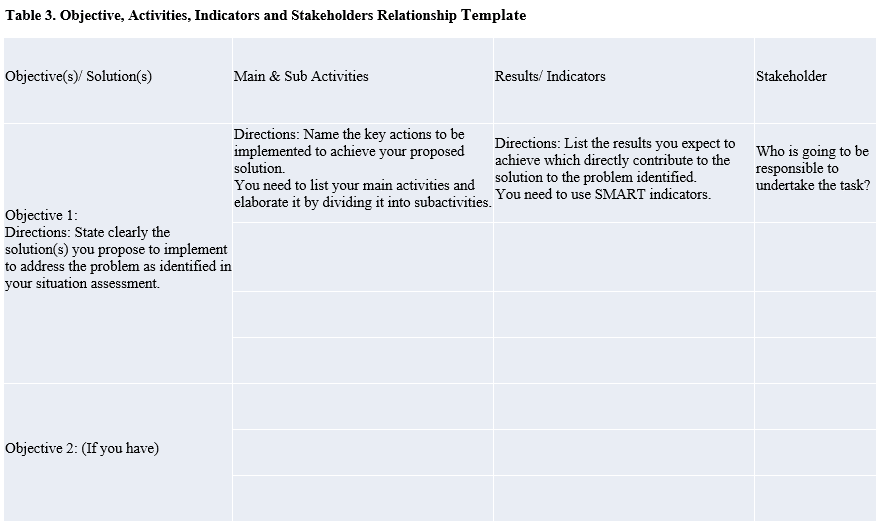Information

Summary: Focuses on translating project objectives into actionable tasks through detailed activity planning, ensuring tasks are organized, sequenced, and scheduled effectively.
Learning Objectives:
After the situation analysis, you need to plan some activities in order to achieve the overall objective, purpose and results you have determined. These activities should be structured as simply and uncomplicatedly as possible. Some grant programs and/or organizations require activities to be disclosed in the format they have determined. For this reason, it is recommended that you carefully review the application guide and form. For example, the Erasmus+ program demands the creation of Workpackages in Cooperation Partnerships projects (and if possible, no more than 5 of these WPs) and has adjusted their application systems accordingly.
When organizing work packages or activities, it is important that you specify the activities that are related to each other under a main heading and explain them in chronological order (Esteves & Pastor, 2002) While determining your activities, you can start from the results you have determined at the bottom of the situation analysis. If you set up the necessary activities to achieve these results, you will achieve your project goal and contribute to the overall objective. This will ensure the success of your project.
You can specify sub-activities under each activity you have determined and write sub-items as much as your application form allows. However, it is recommended that you do not create a number of items that would make it difficult to evaluate the project form. Sub-activities may directly influence the main activity or include supporting and complementary activities. Activities that do not contribute to the achievement of the project purpose should not be included in the project. Such and poorly justified activities may be subject to criticism by evaluators and result in a low score.
It is recommended that you match each activity you undertake to your purposes and, if possible, explain its relevance. While organizing your activities, you should also specify the outputs and the effects that will occur as a result of the relevant activity. Information on outputs and effects may be requested in the same part of the application form or in different parts. It is important for the consistency of the project that you specify this information in the relevant sections according to the format requirements of your application form.
You need to determine how long each of your activities will take and be realistic when determining this duration (Dawson & Dawson, 1998, p.300). Any activity that you cannot perform on time will lead to shifts and deviations in your project goals and plans. In addition, if you keep the time span large, less time may be allocated to other activities of the project than necessary. This is one of the factors affecting the overall performance of the project during the implementation phase. It is important that activity times are well-designed, consistent, measured and realistic, as evaluators will score with these considerations in mind while working on the project proposal.
In the project proposal, you must also specify all needs and resources required to realize each activity, to be met from the project budget and/or to be provided as in-kind contribution (Chen & Zhu, 2011). These issues are especially important when creating the budget. In some programs, a separate template may be requested for the budget. You will need to consider these issues together in the document that you worked for preparing for the activities and specify them in different parts of the project proposal form if requested. When creating the activities, taking notes of these issues in the working document will prevent you from going back to the beginning if information is requested at different points in the proposal form.
When creating your activities, remember that the project is a team effort. This team work includes the coordinating organization's work teams as well as the stakeholders and their employees (Usadolo & Caldwel, 2016). You need to specify which partner(s) will undertake each activity or whether they will take place simultaneously in different venues. In addition to this, it is important to explain the duties of the employees in the project, the qualifications of those who will take charge and the employment processes if additional employment is required.
Activity 1.3 Needs Analysis (Based on the results of the 1.1 and 1.2)
